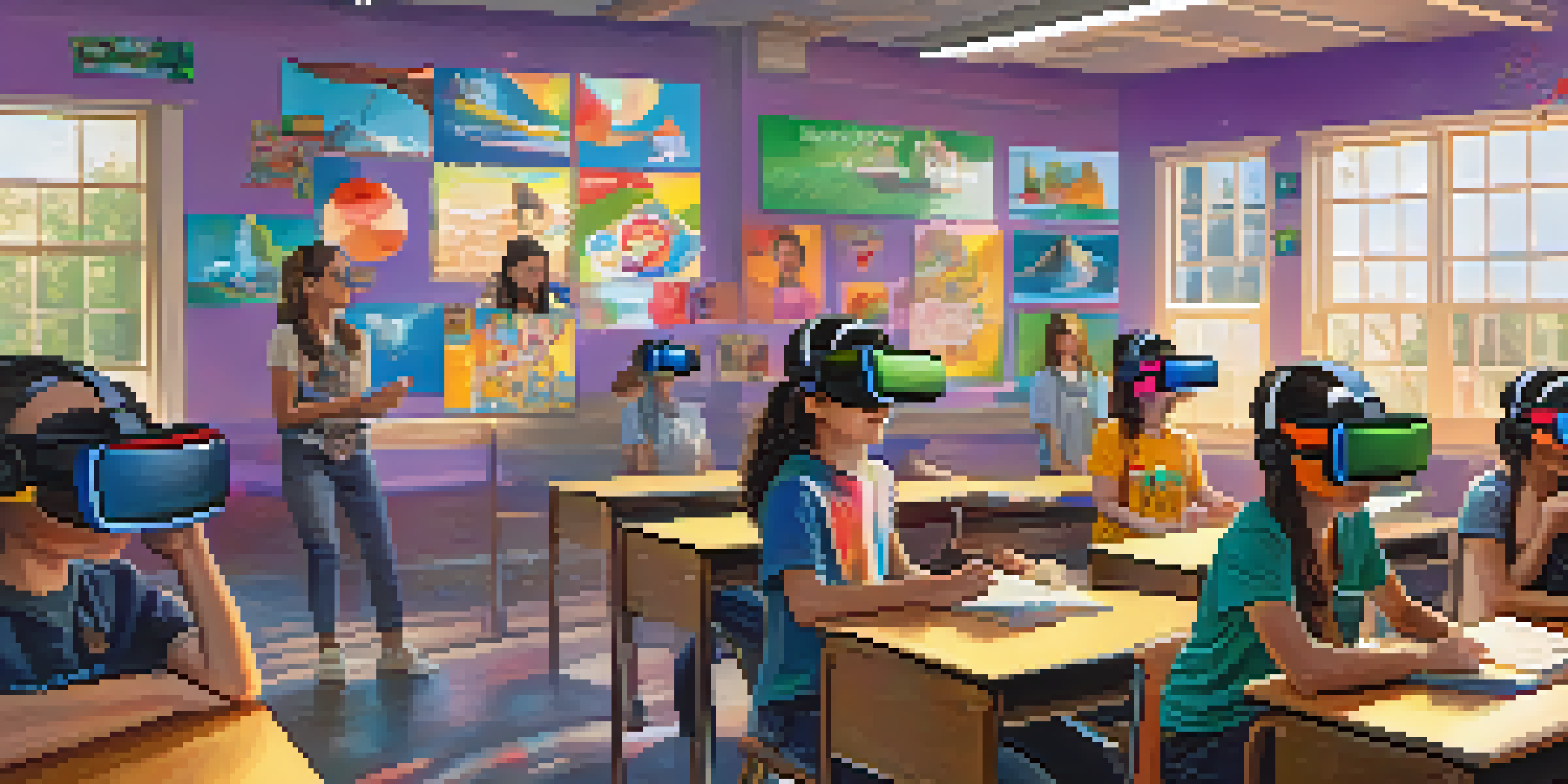Enhancing Empathy and Understanding through VR in Education

Introduction: The Role of Empathy in Education
Empathy is a cornerstone of effective education, enabling students to connect with diverse perspectives. When learners can understand and share the feelings of others, they are better equipped to navigate social complexities. This skill is vital not just for personal growth, but also for creating inclusive communities. With the rise of technology, particularly virtual reality (VR), educators have new tools to enhance empathy in the classroom.
What is Virtual Reality and How Does it Work?
Virtual reality immerses users in a digital environment, allowing them to interact with 3D simulations. Using VR headsets, students can experience scenarios that feel incredibly real, which is key to fostering empathy. Imagine walking in someone else's shoes—literally! This immersive experience can lead to deeper understanding and emotional connections with diverse cultures and experiences. By making abstract concepts tangible, VR transforms learning.
Empathy Enhances Learning Outcomes
Empathy is crucial for effective education, helping students connect with diverse perspectives and fostering inclusive communities.
How VR Promotes Empathy in Learning
Through VR, students can experience situations they might never encounter in real life, such as living in a different country or facing social challenges. For instance, a VR simulation might place students in a refugee's journey, allowing them to experience the emotional and physical hurdles firsthand. This kind of engagement can lead to profound emotional responses, fostering a genuine understanding of others' struggles. As a result, students develop a more compassionate worldview.
Case Studies: Successful VR Implementations in Schools
Many schools have successfully integrated VR into their curricula, with impressive outcomes. For example, a school in California used VR to teach students about historical events from multiple perspectives, leading to enhanced discussions and critical thinking. Another initiative allowed students to experience the lives of individuals with disabilities, promoting awareness and advocacy. These case studies highlight the effectiveness of VR in enriching students' understanding of complex social issues.
VR Immerses Students in Real Scenarios
Virtual reality allows students to experience situations they may never encounter in real life, leading to a deeper understanding of others' struggles.
Challenges of Integrating VR in Education
Despite its potential, integrating VR into education comes with challenges. High costs for equipment and software can be a barrier for many schools, particularly those with limited budgets. Additionally, educators need training to effectively implement VR lessons. It's crucial to address these challenges so that VR can benefit all students, not just those in well-funded programs. Finding creative solutions is key to overcoming these hurdles.
Creating Empathy-Focused VR Experiences
To maximize the empathy-building potential of VR, experiences should be carefully designed. Content creators and educators must collaborate to ensure scenarios are authentic and relatable. For instance, using narratives that reflect real-life voices can enhance emotional engagement. The more realistic and immersive the experience, the greater the potential for empathy. Thoughtful design will ensure that VR experiences resonate deeply with students.
Challenges in VR Education Integration
Integrating VR into education faces hurdles like high costs and the need for educator training, which must be addressed to benefit all students.
The Future of VR in Educational Empathy Development
As technology advances, the future of VR in education looks promising. Innovations in VR could lead to even more immersive and diverse experiences, allowing students to explore a wider range of perspectives. This evolution will likely make empathy-building initiatives more accessible and impactful. With ongoing research and development, we can expect VR to play a pivotal role in shaping compassionate future leaders.
Conclusion: Embracing the Power of VR in Education
Incorporating VR into education offers a unique opportunity to enhance empathy and understanding. By allowing students to experience the world through different lenses, we can cultivate a more empathetic generation. As educators and technology developers work together, the potential for VR to transform learning is immense. Embracing this innovative tool can lead to more inclusive and compassionate educational environments.